My wife and I were in Boston over the weekend, as it was her fifth reunion from her MIT master's program. I'm also an alum, but was considered a “guest” since I graduated 16 years ago from my program and you don't have to have an MIT degree to know 16 divided by 5 is not an integer.
Being MIT, the reunion wasn't just about parties (and it's not a homecoming weekend with a football game, as my Northwestern 20th reunion will be this fall). The reunion was also full of lectures by alumni and notable faculty. I'll be blogging soon about lectures by MIT Sloan professors Steve Spear (check out my podcasts with him) and Zeynep Ton (I'm reading her book The Good Jobs Strategy now and hope she'll be a podcast guest too).
A few things caught my eye on the Boston Herald and Boston Globe on Saturday.
Listen to Mark read the post (subscribe to the podcast):
In the News
One was a headline for a column by former Boston Mayor Ray Flynn:
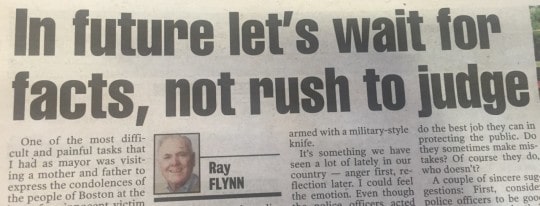
Regardless of the column or the context, just read the headline. This idea is so applicable in many settings, including hospitals.
How often do leaders “rush to judge” (usually blaming an individual) when something bad happens? It's easy to jump to conclusions. Instead, we should wait for facts.
Or, better yet, proactively go look for facts instead of relying on what others tell us.
It's the classic Lean leadership advice to:
- Go and see
- Ask why
- Show respect
MIT Commencement
My wife and I didn't attend the MIT commencement ceremony that was held last Friday. But, we saw this article about the commencement speaker, our national Chief Technology Officer Megan Smith shared some important thoughts about respect and teamwork.
The headline was: MIT graduates urged to ‘be kind, be inclusive, be open'
She said, in part:
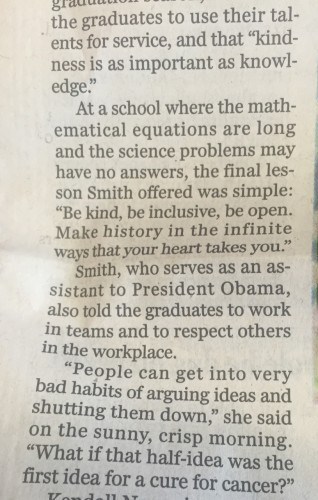
These are important thoughts. I've learned in my career, often the hard way, that having the right answer is NOT enough to successfully lead change. You need to know how to work with people and that's something I've tried to get better about over time as a “recovering engineer” as some might say.
In the last paragraph, she makes a great point that must be applied in our Kaizen efforts. Norm Bodek taught me to “treat every idea like a gift” when employees speak up. If we criticize ideas or belittle people, they're going to stop speaking up. The cost is immeasurable if we miss process improvement opportunities, large or small.
At the Ballpark
I'll probably write a whole post about it, but a woman was injured by a flying broken bat at a Red Sox game in Fenway Park. She was hit in the head, was bleeding profusely, and was in critical condition in a hospital. She's expected to survive (and is now in “fair” condition).
It was front page news in both papers and you can see one article here: Police: Life-threatening injury to fan hit by bat at Fenway.
Was this a fluke? It is rare, perhaps to have an injury that severe, but what do the data say?
1,750 fans are hurt in the stands at Major League Baseball games each year… or two fans every three games. This woman was in the 2nd row near the third base dugout. There's netting behind home plate for foul balls in American ballparks.
In Japan, they had netting that extended all the way down the first base and third base sides. I saw this when I attended a game at the Tokyo Dome last November. Nets like this would have protected the fan at Fenway.
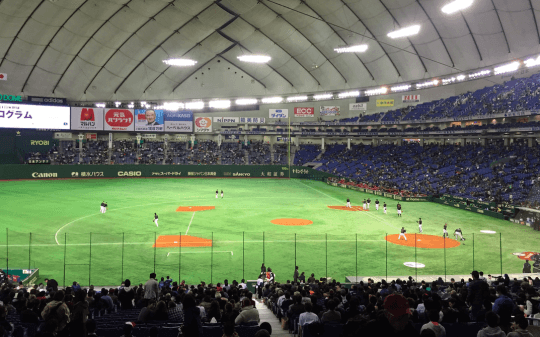
Oh, and every time a pop fly was headed for the stands (on a higher trajectory that would have cleared the net, yet not been as harmful), ushers would blow whistles to alert fans.
Then, there would be a P.A. announcement and the scoreboard would have this message…. Every. Single. Time.
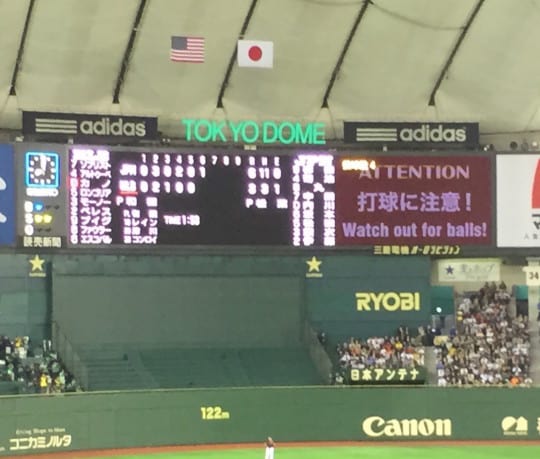
Watch out for balls!
As shared in an article at Business Insider, there are signs posted in American ballparks… but signs don't really prevent injuries (see my BeMoreCareful.com blog for more about that). I don't recall whistles, or scoreboard notices, or P.A. announcements.
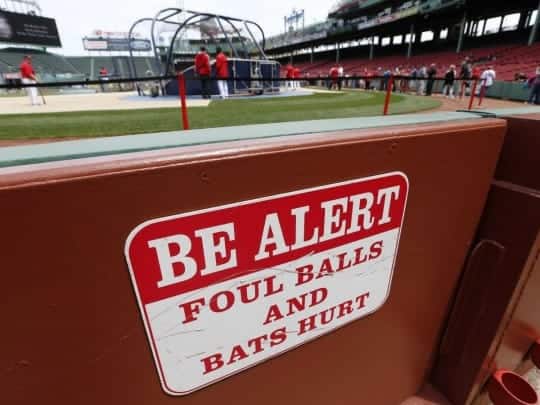
We need to do more than tell people to “be alert” whether that's at ballparks or in our workplaces and hospitals.
The MLB players union had actually proposed extending netting to the dugouts. The MLB owners have balked at the idea, as fans in those expensive seats might not like looking through netting.
At NHL hockey arenas, netting was installed behind the goals to protect fans after a young girl died after being hit in the head by a puck at a game in 2002. There were complaints and some backlash… but fans have, I think, mostly accepted the netting as normal – a reasonable protective measure, rather than an overreaction (read more about this).
If teams are going to say “fan safety is our top priority” (much as hospitals do), how do you translate those words into action?
What do you think? Please scroll down (or click) to post a comment. Or please share the post with your thoughts on LinkedIn – and follow me or connect with me there.
Did you like this post? Make sure you don't miss a post or podcast — Subscribe to get notified about posts via email daily or weekly.
Check out my latest book, The Mistakes That Make Us: Cultivating a Culture of Learning and Innovation:











[…] I was in Dallas for the Lean Healthcare Transformation Summit (as I wrote about). As I mentioned yesterday, it was also my wife’s five year reunion from her MIT master’s program. As I also […]
There have been more incidents of fans being hit and injured badly by foul balls.
The latest from the league and commissioner:
“Manfred: More safety netting being discussed”
MLB has made a recommendation to extend netting:
Article Link
Reactive improvement is better than no improvement at all?
Reds among three teams planning to extend safety netting before 2018 season
Will we see more screens in the future? There are still fan injuries occurring:
Screens Are Everywhere at Yankee Stadium — Before the Game